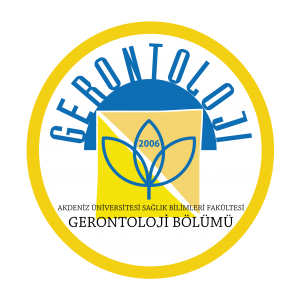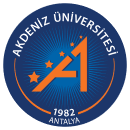At the Higher Education Executive Board Meeting dated 23.05.2018, the Presidency of the Council of Higher Education deemed the establishment of the Department within the Faculty of Health Sciences appropriate, in accordance with Article 7/d-2 of Law No. 2547, as amended by Law No. 2880.
TURKISH/ RUSSIAN/ GERMAN/ PERSIAN/ ARABIC
What is Gerontology?
Gerontology is the science of old age and aging. Gerontology is one of the scientific disciplines seeking ways to intervene in the aging process. In a world where the ratio of the elderly population to the total population is increasing daily, the elderly need to be supported not only with healthcare due to illness but also socially, so they can continue their lives without being isolated from social life or dependent on others. Gerontology is a multidisciplinary, theoretical, and applied science.
Working Areas for Gerontologists
Graduates of the Gerontology Department work in hospitals, clinics, nursing homes, physical therapy and rehabilitation centers, ministries (such as health, family, and social policies), retirement homes, family counseling centers, day-care centers, universities, research centers, companies developing new services/products, non-governmental organizations, local governments, and home care services. Since there is also a need for scientists to conduct theoretical work in gerontology, gerontologists who wish to can pursue an academic career by participating in Master's and PhD programs.
Profession Information
- Profession Code: 2269.13
- Profession Name: Gerontologist
- Main Group: Professionals
- Sub-Main Group: Health Professionals
- Group: Other Health Professionals
- Minimum Required Education Level: Bachelor's Degree
- National Occupation Standard Gerontologist Level 6
A Brief History of Gerontology
In the early periods of Scientific Gerontology (after World War I), the biological dimensions of aging were primarily studied. Following World War II, priority was given to the study of social and psychological dimensions. Today, in addition to social, psychological, biological, and medical perspectives, the phenomenon of aging is also researched on many other planes, including philosophical, cultural, historical, theological, and ecological. New scientific branches such as Gerontosociology, Gerontopsychology, and Gerontopsychiatry have also emerged. Different scientific branches study and try to explain the phenomenon of aging within their own fields and with their own methods. Based on this knowledge, Gerontology seeks ways to intervene in the aging process. Therefore, it defines itself as an interdisciplinary science. Information regarding the history of gerontology was compiled by Prof. Hans-Werner Wahl (2004) (See Wahl, H.-W. (2004): Entwicklung gerontologischer Forschung, (Pp. 29-48). In A. Kruse & M. Martin (Ed.), Enzyklopädie der Gerontologie. Bern et. al.: Huber).
The establishment of the Akdeniz University Gerontology Department in 2006 within Akdeniz University by the decision of YÖK (Council of Higher Education), under the direction of its founder Prof. Dr. phil. habil. İsmail Tufan, marks the beginning of a new era for science in Turkey. For the first time, the elderly, aging, and old age were drawn outside the scope of biological-medical limitations and were also accepted as a social and psychological phenomenon. It is an expected development that in the coming periods, with the addition of new fields, the connections of aging with many other scientific areas such as economics, politics, culture, history, philosophy, and theology will be discovered.
A period of 15 years had to pass before reaching the establishment phase of the Gerontology department. The establishment of the Gerontology department in Berlin in 1991, which constituted only one of its stages, means that this process will continue to accelerate in the period ahead. However, a primary condition for this is to increase the recognition of Gerontology in Turkey.
One of the experiences we gained during the "gerontological process" that we brought to Turkey in 1999 was that the recognition of Gerontology as a concept and scientific branch remained at a very low level, even among experts. Naturally, this brought to mind the following question: If the number of experts in Turkey who can say what Gerontology is, even within the scientific community, is so low, then how can young people preparing for university be expected to decide whether or not to study Gerontology? As the American scientist Metehan said, it is not possible for people who do not know the concept of "elephant" to see the elephant. Therefore, Gerontology must become recognized in Turkey.
Historical Moments for the Gerontology Department
- Establishment of the National Social and Applied Gerontology Association: 2004
- 1st International Social and Applied Gerontology Symposium: 2005 Department Establishment: 2006
- Start of Education and Training: 2009
- First Graduates: 2013
- Establishment of the Gerontologists' Association: 2016
- Transition to the Faculty of Health Sciences: 2018
- First public sector employment: November 21, 2019
- Addition of the Gerontology Department to YLYS (Scholarship program for graduate studies abroad): 2019
Our Logo
One of the ways to promote something is to use symbols. Following this logic, the idea arose that the Akdeniz University Gerontology department needed an emblem. This was realized in 2001. Our emblem was designed by us in that year, but since the Gerontology department had not been established at that time, the emblem was kept aside for future use. Later, the YÖK legislation began to be examined to answer the question: Does YÖK grant university departments the authority to use an emblem, or does it impose a ban on it? In the legislation of the Council of Higher Education, no phrase stating that a department "cannot have" or "can have" an emblem was found. Therefore, there is no binding rule in this regard. This offers departments the opportunity to have their own emblem. The AU Faculty of Arts and Sciences, Department of Gerontology, took advantage of this opportunity and began using its emblem after patenting it. The fact that a department is using an emblem for the first time may be found strange, as with any innovation, but in our opinion, this should be accepted as an initiative that sets an example for other departments.
The emblem of the AU Gerontology Department, consisting of a blue tulip with the founding year "2006" written inside, set on a yellow-melon orange background, is not solely for "promotional" purposes. Taking into account the deep meanings of symbols that cannot be perceived from the outside, we also perceive our visions, missions, and ethical ideals that motivate us in our emblem, and we want to instill these in our staff, students, and the general public. Because all our verbal or non-verbal behaviors are observable human actions, and we interpret everything from gestures to "meaningful" symbols, as they have symbolic meanings in addition to many other features. While trying to shape the world we live on and the society we live in through goal-oriented initiatives, we always try to broaden our horizons based on our interpretations by attributing symbolic qualities to our endeavors (Soeffner, 2007, p.166). Therefore, we believe that initiatives and symbols that can remind us and others of our efforts, goals, and visions in the field of Gerontology—which we may never reach because they are ideals—and that can help expand our individual and social horizons with new interpretations, are needed not only in Gerontology but in society at large.
Our logo was prepared by Prof. Dr. phil. habil. İsmail Tufan and its name has been registered by our university.
Soeffner, H.-G. Sozialwissenschaftliche Hermeneutik, U.Flick, E. von Kardorff & I. Steinke, Qualitative Forschung. Ein Handbuch. 5. Aufl., Reinbek bei Hamburg: Rowohlt, (2007), Pp. 164 – 174.

Son güncelleme : 10.11.2025 23:46:19
